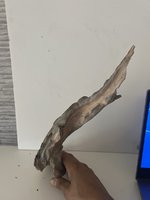Hi all,
I’m new to bonsai and have just purchased a dawn redwood from the local nursery. I also collected a nice bit of deadwood of which I want to use to make a tanuki redwood bonsai with.
My question is, should I leave it as it is now and do a trunk chop when it drops all its leafs as I want to reduce the hight and concentrate on growing the trunk into the deadwood. Or chop the top now?
It also want to repot into a larger growing pot to help this growth before it goes into a bonsai training pot. Should I wait to repot as above?
Thanks






I’m new to bonsai and have just purchased a dawn redwood from the local nursery. I also collected a nice bit of deadwood of which I want to use to make a tanuki redwood bonsai with.
My question is, should I leave it as it is now and do a trunk chop when it drops all its leafs as I want to reduce the hight and concentrate on growing the trunk into the deadwood. Or chop the top now?
It also want to repot into a larger growing pot to help this growth before it goes into a bonsai training pot. Should I wait to repot as above?
Thanks







